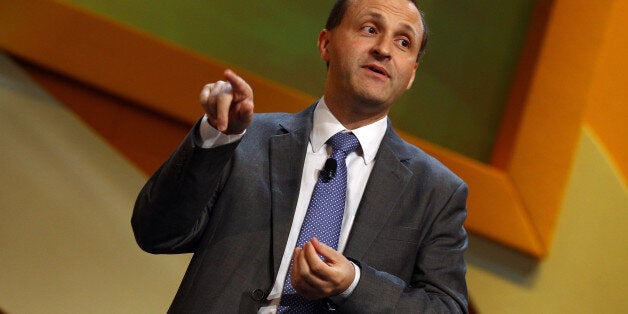
Workers should consider ploughing their pay rises into their pension savings as the government estimates that nearly 12 million people are still not putting enough money aside for their old age, pensions minister Steve Webb has said.
Around 11.9 million people are still failing to save enough to live comfortably in their retirement, according to new projections from the Department for Work and Pensions (DWP), which has taken savings into both private and state pensions into account to make its calculations.
Writing in the Daily Telegraph, Webb said people must take "personal responsibility" and think about what they can do to achieve the amounts they aspire to live on in their later years.
Webb has previously defended the government's relaxation of rules surrounding savings, saying he was "relaxed" if pensioners chose to spend their retirement pot on a Lamborghini.
The pensions minister's latest comments come as DWP figures suggest it is middle and higher income earners who will face the biggest income shock when they end their working lives.
Around 4.2 million under-savers, equating to 35% of all those who are not saving enough to maintain the standard of living they have become used to during their working lives, have incomes between £22,700 and £32,500, while a further 4.6 million under-savers, making up 38% of the total, are in the £32,500 to £52,000 income bracket.
Around 1% of pension under-savers have an income of less than £12,300, 16% earn £12,300 to £22,700 and 10%, or 1.1 million people, have a salary of over £52,000, according to the DWP's modelling.
Webb suggested that people should think about putting any salary increases they get towards their pension savings.
He wrote: "In most years, people who are in work will receive a pay rise - even if that's only a small amount of money, it might be that this could fund a little extra towards the workplace or private pension that's going to fund a happier and more comfortable retirement.
"Above all, it's time we all started thinking about not just whether we pay into a pension but how much we contribute and what kind of an income it will fund in due course."
The DWP's modelling suggests that around half of people who are not saving enough towards their retirement are "mild under-savers", meaning that that are at least 80% of the way towards achieving the amounts they need for a comfortable retirement.
Around one in 12 (8%) people who are not putting enough aside are "substantial" under-savers, meaning they are putting away less than half the money they need.
Webb also said that "difficult decisions" will need to be made as the government's landmark scheme to automatically enrol people into pensions continues on where to set the appropriate level for how much money should be contributed into schemes.
He said that potentially raising pension contribution levels could reduce the number of people under-saving - but it could also have an impact on people opting out of their pension. Opt-out rates are currently low.
The minimum contribution that must be paid into a worker's pension pot, which is a percentage of an individual's earnings and is set by government, is already set to increase in phases in the coming years. This minimum is made up of the worker's contribution, the employer's contribution and tax relief.
At present, auto-enrolled workers must contribute 0.8% of their qualifying earnings, increasing to 4% from 2018. Employers contribute 1% of qualifying earnings, increasing to 3% from 2018 and the government contributes 0.2% of qualifying earnings in tax relief, rising to 1% from 2018.